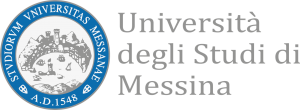Establishing a Circular Economy (to maximise the use made of resources and minimise waste generation) was and is a major policy area within the European Union and elsewhere. Explicitly seen as increasing economic competitiveness and laying a foundation for environmental employment, Circular Economy policies are designed to increase resource efficiency and decrease carbon dependency.
The many different fields of activity involved in developing a Circular Economy (e.g., re-use, recovery, recycling, design for the environment amongst others) have been shown to operate with varying degrees of effectiveness in different places and for different materials. Limited research had so far been undertaken that critically analyses these activities as interrelated social, technical, environmental and geographical phenomena.
CRESTING recruited 15 Early Stage Researchers (ESRs) to train them in cutting edge systematic analysis of CE-related activity and initiatives in a range of geographic and economic settings. The purpose of this was to translate critical assessment to lessons for managing the transformation to a CE. Hear more about Cresting from Dr Pauline Deutz, Cresting Project Coordinator in this short video.
The project comprised interwoven training, research and communications. Training included research ethics, methodologies, stakeholder engagement, communications and dissemination. Social science and interdisciplinary research methods included: discourse analysis of public and company policies; interviews of CE actors and stakeholders; questionnaires of individuals and organisations; life cycle assessments; Delphi analysis; workshops to co-design products and product-service systems; social network analysis, expert panels; and focus groups. Each project has had partner(s) who have provided secondments, guidance, data, distributed surveys and/or actively participated in workshops.
The project asked the following questions:
1. To what extent are CE-practices already occurring in public and private sector policy and practice?
There are examples of local, national, and global aspects of public, private and third sector-based CE activity to be found in the countries studied. Some CE-practices are well-entrenched in society as a result of decades of policy-drivers, which have normalised practices such as recycling. However, the systemic adoption of a CE, including the more resource-saving practices (e.g., re-use, repair and circular design), require a leap in performance. Good practice can be found (e.g., in multi-stakeholder product-service system design and development), but more commonly organisations are internally focused, still questioning how to balance being circular against prior sustainability expectations. Whilst an organisational vision is needed to drive progress towards a CE, an openness and ability to engage beyond the organisation are vital too.
2. What are the environmental, social and economic implications of developing a CE, and how do these vary by scale?
New and used products and materials are traded at scales from local to global. Critical for a sustainable CE are information and expertise to support decision making at each step from product/service conception, through re-use, recovery and eventual disposal. All-purpose objectively optimal solutions are exceptional; effective regulation is needed to ensure implementation and to avoid illegal disposal routes (e.g., in the Global South). New jobs are the most widely cited social benefits of a CE, but remain a future development; organisations will need to adjust their skills-base e.g., for collaboration as well as technical aspects. The expected EU-scale economic benefits will not be shared across all localities. Local to regional scale initiatives contend with conflicting priorities and interests – between and within the public, private and third sectors.
3. How can current CE practice be applied in different geographic/industry contexts?
The geographic picture to emerge is characterised by similarities, differences and interrelationships between places. Even within Europe, style and emphasis of approaches to a CE vary (e.g., consideration of social factors; prioritisation of place or supply chain connections). CE development both reflects and influences other characteristics of a place, in addition to influencing outcomes elsewhere. The latter is best illustrated by the impact of used goods leaking from extended producer responsibility systems in high income countries to lower income countries. With partners in recipient countries we propose a system of ‘ultimate producer responsibility’ to combat this.
4. What methodologies of impact measurement and sustainability indicators can be developed for public and/or private sector organisations in the context of a CE?
Developing circular practices is a means to sustainability, not an end in itself. Methodologies measuring the progress and effects of CE initiatives and to estimate potential impacts are critical to support decision making. Life Cycle Assessment and related indicator approaches comprise widely-known and effective tools to steer decision making. However, the methodologies need refining for CE practices, especially regarding stakeholder perspectives and social aspects. More work is needed to develop the skills involved to undertake circular and social assessment and reporting.
5. How can a CE in practice be understood beyond the policy and other aspirational definitions of the term?
The most socially transformative visions of a CE (e.g., prioritising degrowth and inclusive, just outcomes) would comprise a circular society. However, aspirations for a just transition to a CE (e.g., in EU policy) are not matched in implementation measures. Policy-maker and company visions remain driven by a growth agenda. Third sector organisations, in and beyond Europe, use circular practices (e.g., re-use, sharing) in value networks that incorporate non-monetary values. However, these socially and economically marginal activities are protecting the vulnerable rather than removing vulnerabilities.
For a summary of the results of the project, please download the Summary of Results.








